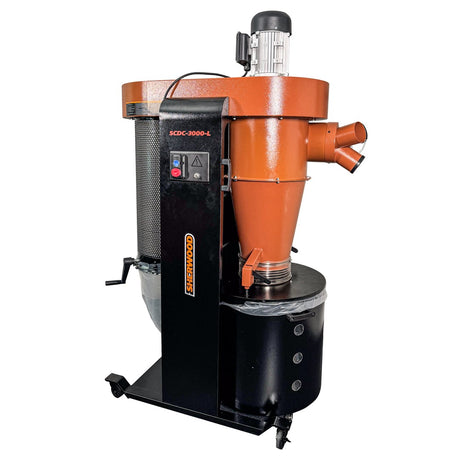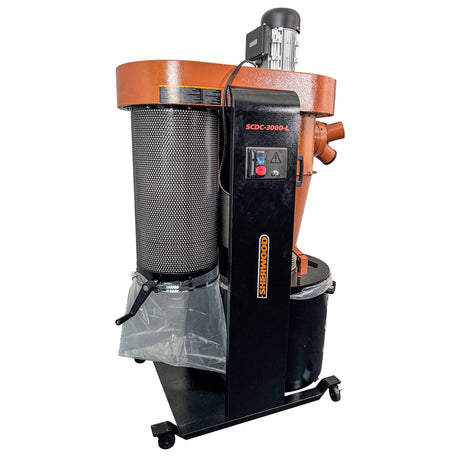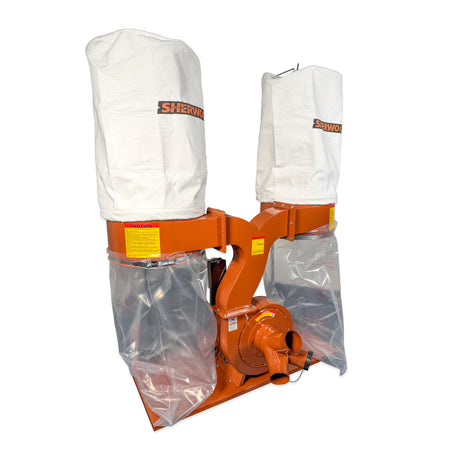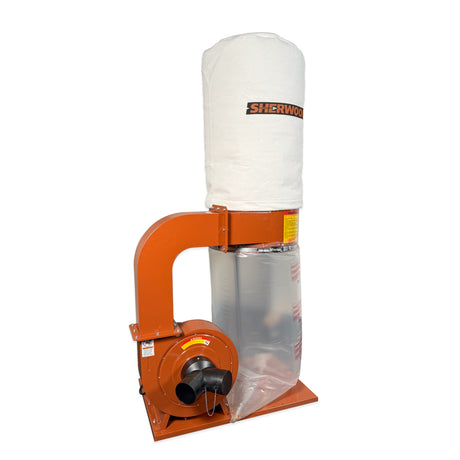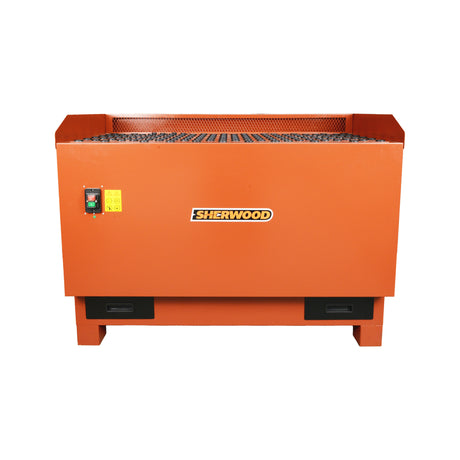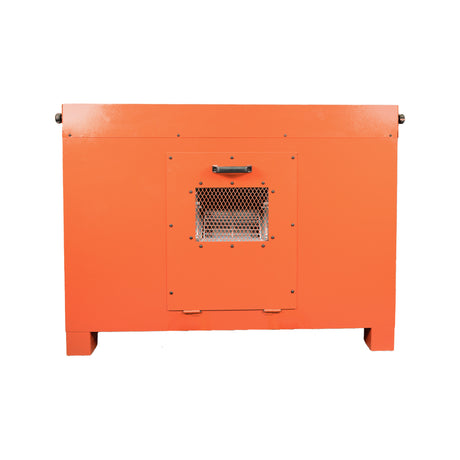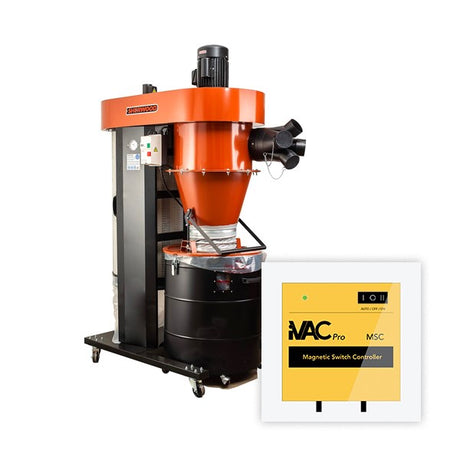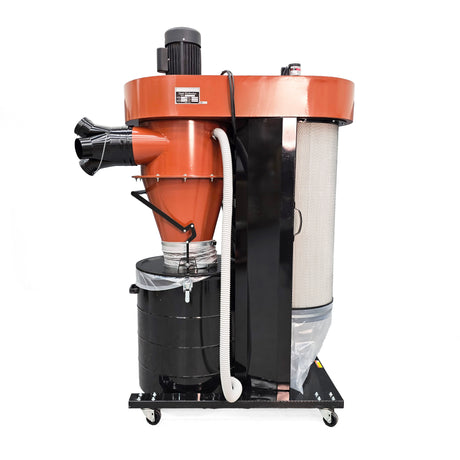Sherwood
Sherwood 2.5HP Cyclone Dust Extractor Two-Stage Collection 1200CFM
$2,249.00$2,499.00Unit price /UnavailableVery low stock (1 unit)Sherwood
Sherwood 3HP Dust Extractor with Needle Felt Filter Bags Single Stage Dust Collection 2300CFM
$1,439.00$1,599.00Unit price /UnavailableIn stockSherwood
Sherwood 2HP Dust Extractor with Pleated Filter Cartridge Single Stage Dust Collection 1500CFM
$1,240.00$1,378.00Unit price /UnavailableIn stockSherwood
Sherwood 2HP 1500CFM Dust Extractor with Needle Felt Filter Bag Single Stage Dust Collection
$989.00$1,099.00Unit price /UnavailableIn stockSherwood
Sherwood HEPA Pleated Filter Cartridge for Dust Collection 500mm Diameter Medical Grade Filtration
$629.00$699.00Unit price /UnavailableSherwood
Sherwood Downdraft Table 1235 x 610mm Worktable Adjustable Height for Dust-Free Sanding
$719.00$799.00Unit price /UnavailableIn stockSherwood
Sherwood 1100W Powered Downdraft Table 1235 x 610mm for Dust-Free Sanding
$1,979.00$2,199.00Unit price /UnavailableSherwood
$4,750.00$5,277.90Unit price /UnavailableLow stock (2 units)Sherwood
Sherwood 3HP Dust Extractor with Twin Pleated Filter Cartridges Single Stage Dust Collection 2300CFM
$1,941.00$2,157.00Unit price /UnavailableIn stockSherwood
Sherwood Dust Collector Single Stage Three-Phase 3950CFM 3750W
$3,599.00$3,999.00Unit price /UnavailableVery low stock (3 units)Sherwood
Sherwood 2HP Dust Extractor with HEPA Pleated Filter Cartridge Single Stage Dust Collection 1500CFM
$1,699.90$1,798.00Unit price /UnavailableSherwood
$2,849.90$2,997.00Unit price /Unavailable
Effective Dust Extraction for Cleaner, Safer Woodworking
Dust extractors play a vital role in maintaining a clean, safe, and efficient workshop environment. Sherwood dust extractors are designed to handle the wide range of particles generated during woodworking operations, from fine sanding dust to heavy chips created by planers and jointers. Featuring high-powered motors, large filter capacities, and durable impellers, these units ensure reliable airflow and consistent suction throughout prolonged use.
Choosing the right dust extractor depends on the size of your workshop, the types of machines in use, and how frequently dust is being produced. Single-stage dust collectors are well-suited to smaller setups with one or two machines connected at a time, while two-stage or cyclone systems offer superior separation and are ideal for larger operations or workshops where dust volume is high. Many models also feature fine micron filtration, reducing airborne particles that pose health risks.
Efficient dust collection not only contributes to a healthier work environment but also improves machine performance and extends tool life. Buildup of dust and chips around motors, bearings, and cutting edges can lead to overheating, wear, and inaccurate cuts. By incorporating an effective extraction system, woodworkers can significantly reduce maintenance and improve workflow.
To maximise efficiency, ensure ducting is properly sealed and free of unnecessary bends or restrictions that may reduce suction. Use blast gates to control airflow and prevent suction loss across multiple machines. Regularly inspect filters and collection bags or drums to prevent clogging and maintain optimal airflow. Whether you’re a hobbyist or running a full-scale joinery, investing in the right dust extractor will contribute to both safety and productivity in your workshop.
FAQs
What is the difference between single-stage and two-stage dust extractors?
Single-stage dust extractors pull dust and debris through an impeller directly into a filter or collection bag, whereas two-stage systems (such as cyclones) separate larger particles before they reach the filter. Two-stage systems maintain better suction and reduce filter clogging.
How do cyclone dust extractors improve efficiency?
Cyclone dust extractors use centrifugal force to separate heavier debris from fine dust before it reaches the filter. This reduces clogging, maintains airflow, and extends the life of both filters and motors, making them ideal for high-volume or multi-machine setups.
Can I connect multiple machines to one dust extractor?
Yes, many dust extractors can support multiple machines when used with proper ducting and blast gates. It's important to size the extractor’s motor and airflow (CFM) appropriately to maintain adequate suction across all connected machines.
What level of filtration is needed for safe woodworking?
Filtration down to 1 micron or lower is recommended to capture harmful fine dust particles. Many high-quality dust extractors use HEPA filters or pleated cartridge filters to ensure maximum air quality and workshop safety.
How often should I clean or replace dust extractor filters?
Filter maintenance depends on usage

